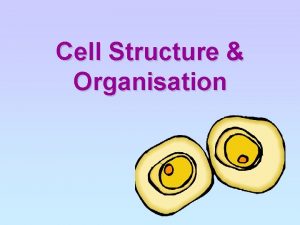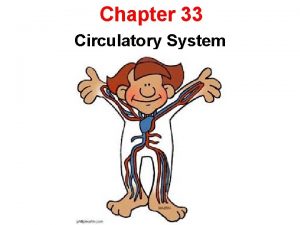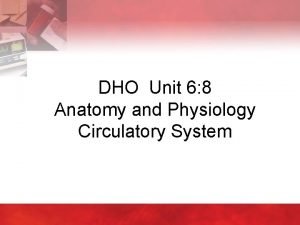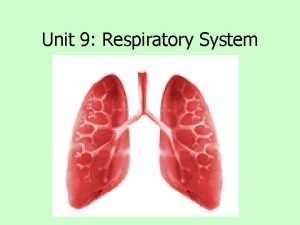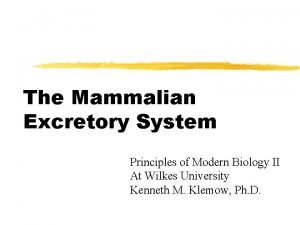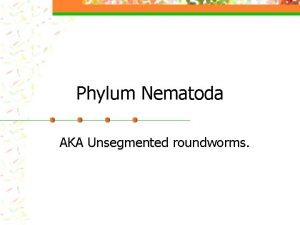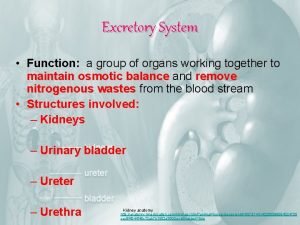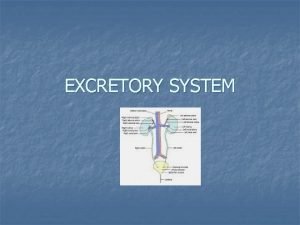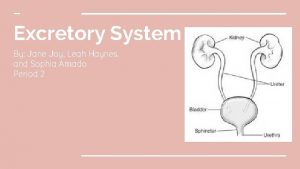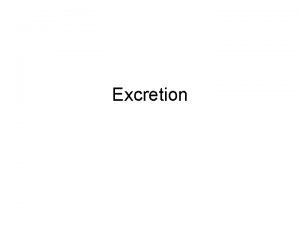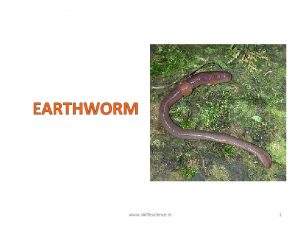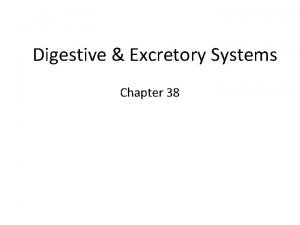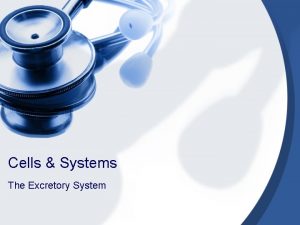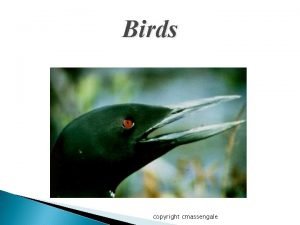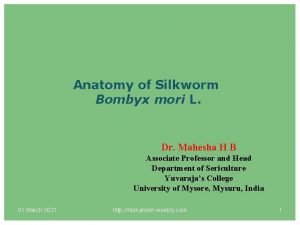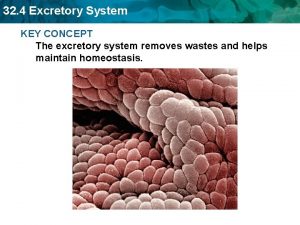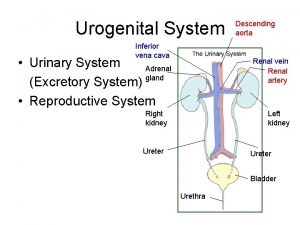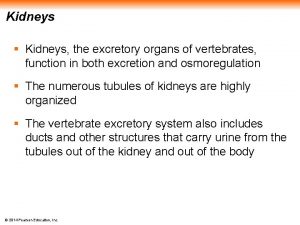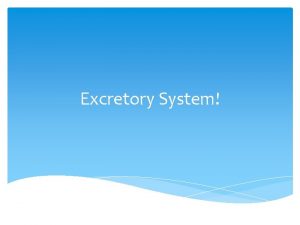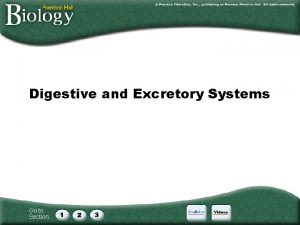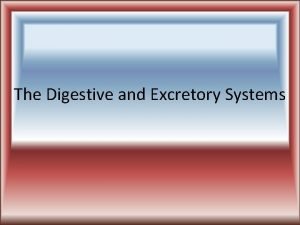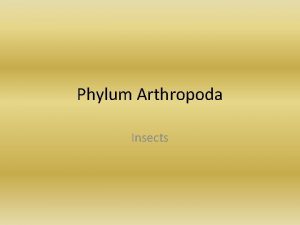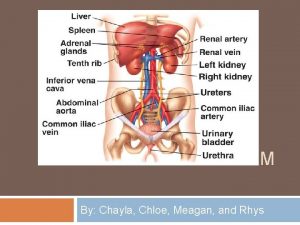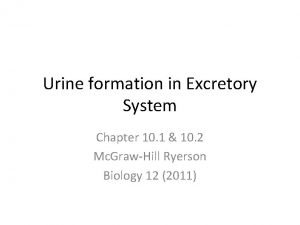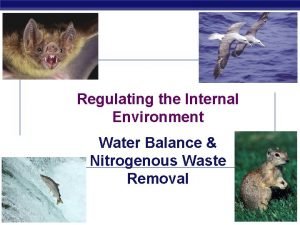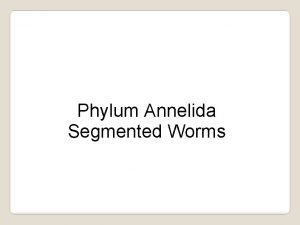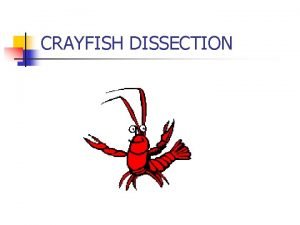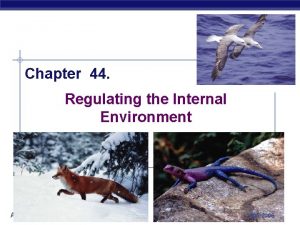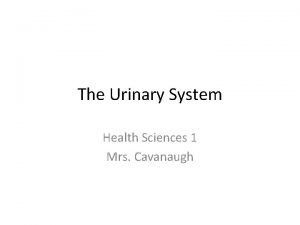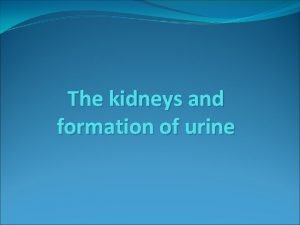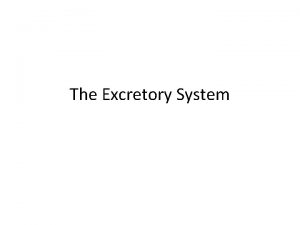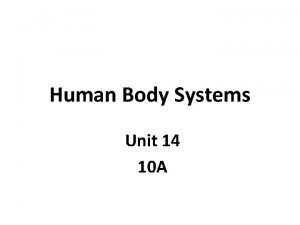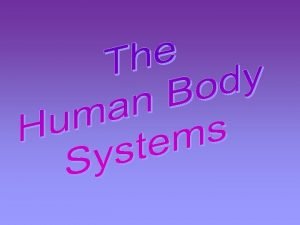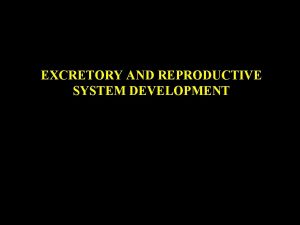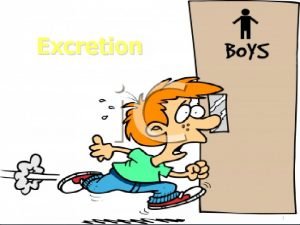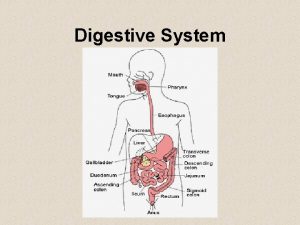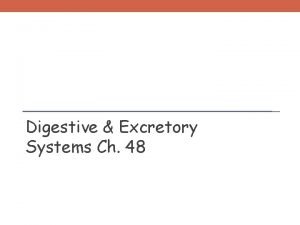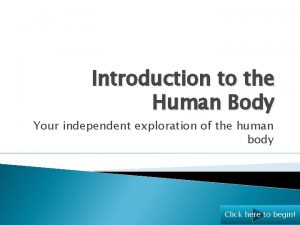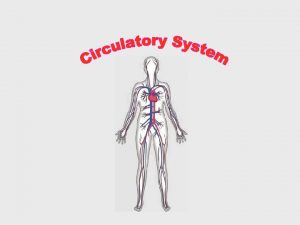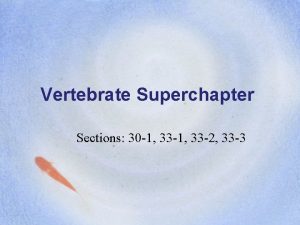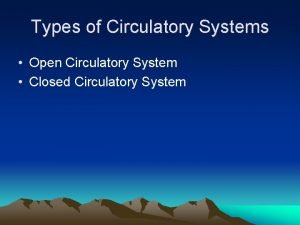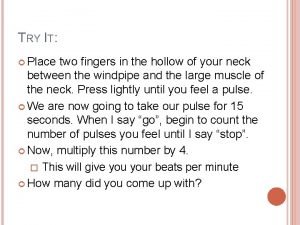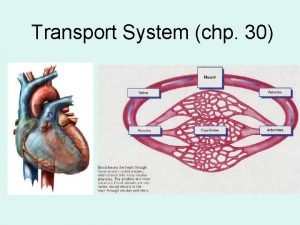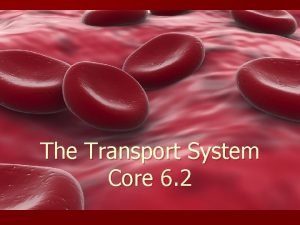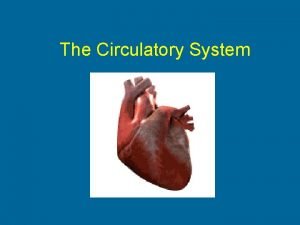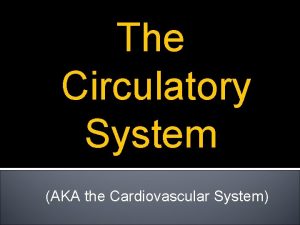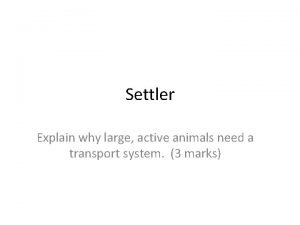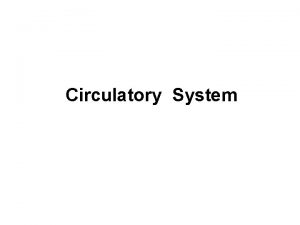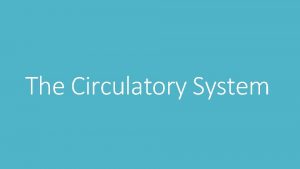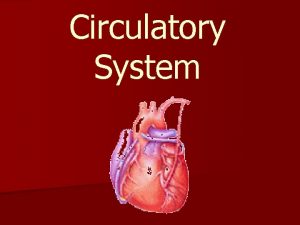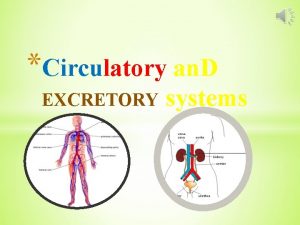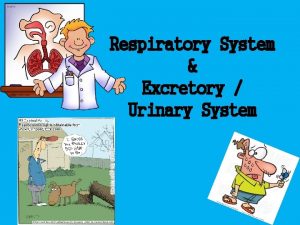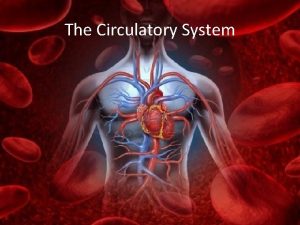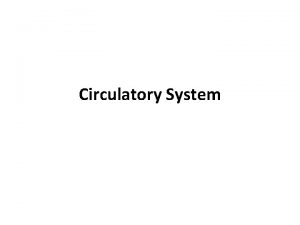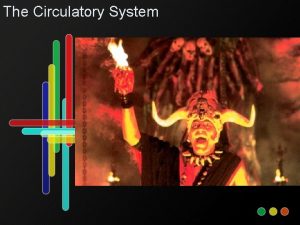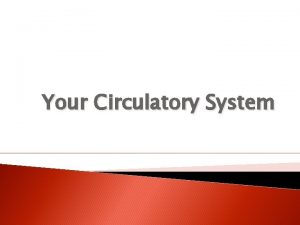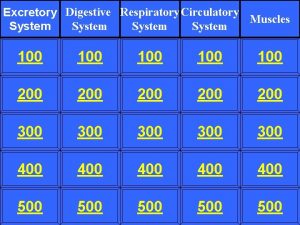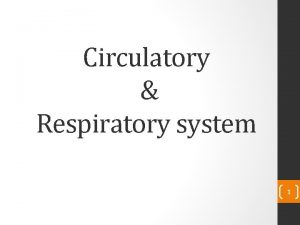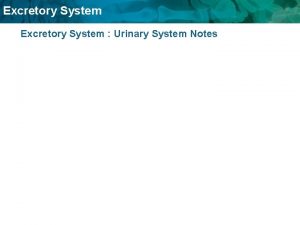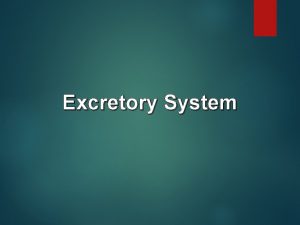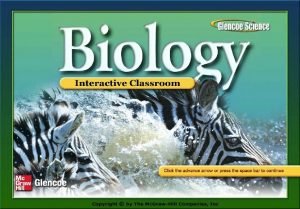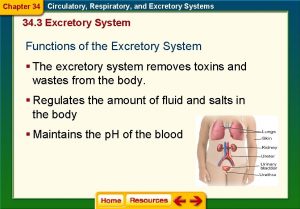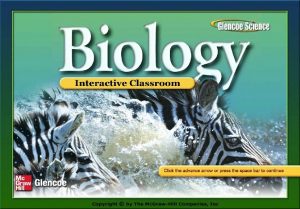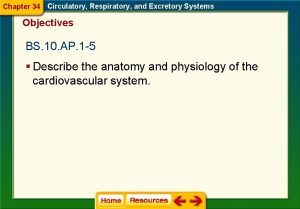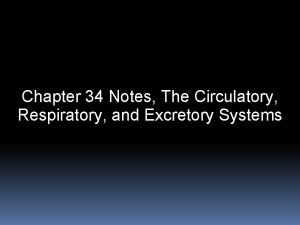Unit 9 CIRCULATORY SYSTEM RESPIRATORY SYSTEM EXCRETORY SYSTEM
































































- Slides: 64

Unit 9 CIRCULATORY SYSTEM RESPIRATORY SYSTEM EXCRETORY SYSTEM

Opener Humans breathe more rapidly during exercise than before it because during exercise the blood contains… A. An increased level of oxygen B. A decreased amount of hemoglobin C. A decreased number of red blood cells D. An increased level of carbon dioxide

Question #1 When blood leaves the heart, where does it exit? A. The aorta B. The capillaries C. The lungs D. The pulmonary vein

Question #2 When a small blood vessel in your hand is cut open, which plays an active defensive role against possible disease? A. Plasma B. Platelets C. Red blood cells D. White blood cells

Circulatory System Chapter 34. 1

Circulatory System Transports blood Delivers – oxygen Removes – carbon dioxide

Circulatory System Blood Heart Blood vessels Lymphatic system

Blood Vessels A network of channels Circulate blood To and from heart

Blood Vessels Arteries Capillaries Veins

Blood Vessels Arteries – strong thick-walled for oxygen rich Capillaries – smallest branches exchange important one cell thick Veins – largest oxygen poor

The Heart A muscular organ Hollow Pumps oxygen - rich blood to body Oxygen-poor blood to lungs

Structure of the Heart Cardiac muscle Conducts electrical impulses Four chambers

Heart

Heart Top right atrium and left atrium Below right and left ventricles Thicker walls do all the work Valves = blood flows one way

How the Heart Beats The atria fill with blood, the atria contract, filling the ventricles with blood The ventricles contract to pump blood out of the heart and into the lungs

Pulse 70 times each minute Expansion and relaxation of the artery wall caused by contraction of the left ventricle

Blood Pressure A measure of how much pressure is exerted against the vessel walls by blood

Blood Flow in the Body

Blood Components Plasma Red Blood Cells Platelets White blood cells Human body has 5 -6 liters

Plasma 50% of blood is plasma Clear fluid Mostly water Transports materials to and from

Red Blood Cells Carry oxygen Disc-shaped

Platelets Cell fragments Collect and stick Release chemicals

White Blood Cells Body’s disease fighters Signal or fight

Circulatory System Disorders Atherosclerosis – clogged arteries Causes heart disease, stroke or heart attack

Unit 9 RESPIRATORY

Opener Which of the following is a function of the nervous system? A. Releasing ATP into contracting muscle tissue B. Signaling muscle tissues to contract C. Producing lactic acid in fatigued muscle tissues D. Increasing cellular respiration

Quiz Draw and label a neuron. What is a Reflex Arc Pathway?

Question #1 Which process causes the diaphragm to move back up? A. Cellular respiration B. Exhalation C. Inspiration D. Internal respiration

Question #2 Which process occurs inside the tissue cells in your legs? A. Filtration B. Breathing C. External respiration D. Internal respiration

Chapter 34 Circulatory Respiratory Excretory System

Respiratory System Function – the exchange of oxygen and carbon dioxide The atmosphere and the blood The blood and the body’s cells

Importance of Respiration Body’s cells require oxygen Oxygen and glucose = make ATP molecules ATP = cell metabolism

Respiration Sustain cellular respiration Releases carbon dioxide and water

Respiratory System Function Supply oxygen to body cells Remove carbon dioxide waste from cells

Respiratory System Two processes

Respiratory System Two processes Breathing

Respiratory System Two processes Breathing Respiration

Respiratory System Two processes Breathing – Air enters the body. Mechanical movement of air in and out your body Respiration

Respiratory System Two processes Breathing – Air enters the body. Mechanical movement of air in and out your body Respiration – Gases exchanged in the body

Respiratory System Two processes Breathing – Air enters the body. Mechanical movement of air in and out your body Respiration – Gases exchanged in the body. External respiration and internal respiration

External Respiration Exchange of gases Atmosphere and the blood Lungs

Internal Respiration Exchange of gases Blood and body’s cells

Path of Air Nasal passages pharynx larynx epiglottis, trachea, lungs bronchioles Alveoli diaphragm

Path of Air Nasal passages pharynx larynx epiglottis, trachea, lungs bronchioles Alveoli diaphragm

Gas Exchange in the Lungs Air travels to individual alveoli Oxygen diffuses across Moist thin walls Capillaries Red blood cells

Red Blood Cells Oxygen transported Released to tissue cells

Carbon Dioxide While Oxygen is moving one way Carbon Dioxide moves the other

Breathing Brain directs the rate of breathing When Carbon Dioxide (CO 2) increases Breathing rate increases

Breathing Diaphragm contracts Chest expands Diaphragm down Air in

Breathing Diaphragm contracts Chest expands Diaphragm down Air in Exhalation Diaphragm relaxes Chest reduces Air out

Excretory System CHAPTER 34. 3

Question #1 The kidneys play a major role in maintaining A. The proper breathing rate B. Homeostasis by removing urea, water and other wastes from the blood C. The proper glucose levels in the blood D. The concentration of digestive enzymes in the blood.

Question #2 Which human body system includes the lungs, liver, skin, and kidneys? A. Respiratory B. Transport C. Excretory D. digestive

Excretory System Removes waste Regulates the water and salt Maintains p. H

Excretory System Lungs Skin Kidneys

Excretory System Lungs – carbon dioxide Skin – water and salt Kidneys – major organ

Kidneys Filter out waste, water and salt

Kidneys Filter out waste, water and salt Renal cortex Renal medulla

Nephron Filtration Blood enters Glomerulus Blood stays All the rest pushed through

Nephron Filtration Blood enters Glomerulus Blood stays All the rest pushed through Convoluted tubule Loop of Henle Reabsorption Urine

Urine Leaves the kidneys Ureters Urinary bladder Urethra

Kidneys Filter 180 L of blood a day 1% of body weight Use 25% oxygen of the body

p. H Adjusts the acid-base balance Low p. H High p. H - H+ H+ kidneys will excrete H+ Kidneys will absorb HCO 3 -

Summary Lungs, skin, kidneys Remove wastes, carbon dioxide, water and salt Both filtration and reabsorption are important Maintains p. H homeostasis
 Circularory system
Circularory system Tiny air sacs at the end of the bronchioles
Tiny air sacs at the end of the bronchioles Circulatory system and respiratory system work together
Circulatory system and respiratory system work together Circulatory and respiratory system working together
Circulatory and respiratory system working together Chapter 33 section 1 the circulatory system
Chapter 33 section 1 the circulatory system Conducting zone and respiratory zone
Conducting zone and respiratory zone Unit 6:8 circulatory system
Unit 6:8 circulatory system Unit 9 respiratory system
Unit 9 respiratory system The mammalian excretory system
The mammalian excretory system Nematoda
Nematoda What does the excretory system do
What does the excretory system do Major functions of the excretory system
Major functions of the excretory system The excretory organs
The excretory organs 5 facts about the excretory system
5 facts about the excretory system 5 facts about the excretory system
5 facts about the excretory system Section 38-3 the excretory system
Section 38-3 the excretory system Peristomium in earthworm
Peristomium in earthworm Section 38-2 the process of digestion answer key
Section 38-2 the process of digestion answer key Urogenital papilla fetal pig
Urogenital papilla fetal pig 5 facts about the excretory system
5 facts about the excretory system What is a birds classification
What is a birds classification Bombyx mori silkworm diagram
Bombyx mori silkworm diagram Process of excretion
Process of excretion Quizizz circulatory system
Quizizz circulatory system Vena cava urinary system
Vena cava urinary system Excretory system of vertebrates
Excretory system of vertebrates Excretory system song
Excretory system song 38-2 the process of digestion
38-2 the process of digestion Chapter 20 urinary/excretory system
Chapter 20 urinary/excretory system Digestive system objectives
Digestive system objectives Parainsecta
Parainsecta Excretory system
Excretory system Excretory system
Excretory system Mammalian excretory system
Mammalian excretory system Mammalian excretory system
Mammalian excretory system The characteristics of annelids
The characteristics of annelids Crayfish excretory system
Crayfish excretory system Mammalian excretory system
Mammalian excretory system Kidneys are part of the excretory system in a human body
Kidneys are part of the excretory system in a human body Function of nephron in points
Function of nephron in points Excretory system
Excretory system Excretory system of nematodes
Excretory system of nematodes Excretory system of insects
Excretory system of insects Excretory system functions
Excretory system functions Kidneys are part of the excretory system in a human body
Kidneys are part of the excretory system in a human body Excretory and integumentary system
Excretory and integumentary system Excretory system diagram
Excretory system diagram Shark excretion
Shark excretion Excretory and reproductive system
Excretory and reproductive system Aorta vena cava
Aorta vena cava Homework
Homework Kidneys are part of the excretory system in a human body
Kidneys are part of the excretory system in a human body Digestive and excretory system
Digestive and excretory system Liverloop
Liverloop Excretory system analogy
Excretory system analogy Circulatory system steps in order
Circulatory system steps in order Non vertebrate chordates
Non vertebrate chordates Lungfish circulatory system
Lungfish circulatory system Clam circulatory system
Clam circulatory system Horse heart
Horse heart Carbon dioxide levels in the blood
Carbon dioxide levels in the blood Closed circulatory system
Closed circulatory system Main parts of circulatory system
Main parts of circulatory system 3 main parts of circulatory system
3 main parts of circulatory system Active animals
Active animals



